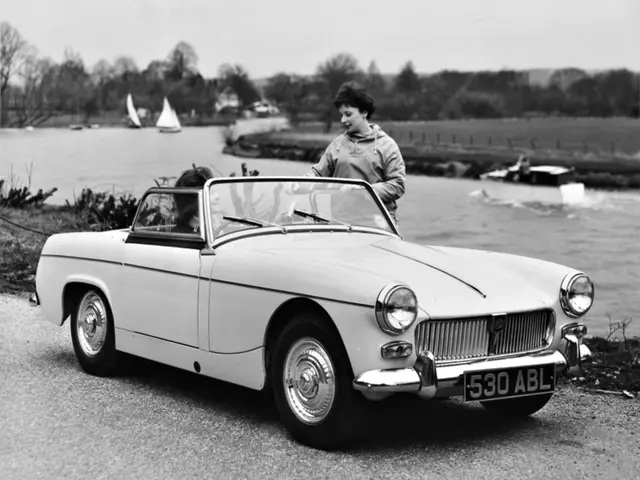The MG Midget – A Celebration
05 May 2021
When MG introduced ‘the new Midget’ in June 1961, some Abingdon traditionalists were decidedly unhappy. A Mr. R. Gowring ranted in a letter to Motor Sport:
“I am one of numerous MG Midget owners who regard the ‘New Midget’ with an air of disdain. I say the ‘New Midget.’ Mr. Courtenay Edwards, the motoring correspondent of the Sunday Telegraph, calls it “the Austin Healey Sprite wearing a false moustache and dark glasses,” which I feel is a much better description.”

Meanwhile, a TD owner named Burnham wrote: “My congratulations to BMC on announcing two new versions of the Sprite within such a short time.” The tone of such correspondence was that everyone at the British Motor Corporation, responsible for the latest MG, merited a damned good thrashing.
However, just as the facelifted Austin-Healey Sprite Mk2 was a logical development, an MG counterpart made considerable marketing sense. The two models were mechanically identical and with the same bodywork; the differences were restricted to badging and interior trim. Indeed, while the front, with its new bonnet, was the work of the Healey Company, Abingdon devised the rear.
As compared with the ‘Frogeye’, the grille and headlamp position were far more conventional, and, at long last, there was an opening boot. The Sprite Mk2/Midget boasted a slightly more powerful version of the 948cc A-Series engine with larger twin SU carburettors. They also retained detachable side screens and the earlier model’s lack of exterior door handles and locks.
And while reviving the Midget name, first seen in 1929, may have upset some die-hards, it instantly linked with Abingdon’s past. This was a sports car for the early 1960s equivalent of a 1920s ‘Bright Young Thing’: all cravats, hacking jackets and James Fox haircuts. This was the perfect entrée into MG ownership - even when budgeting for a heater at another £17 10s. Moreover, for small and/or tolerant passengers, the accessories catalogue included a rear compartment cushion at £4 7s 6d.
The Midget was capable of 86 mph and was priced at £689 11s 5d - £30 more than the Sprite. Neither Sunbeam nor Triumph offered a comparable rival (the Spitfire would not make its bow until 1962) while Ford and Vauxhall steered clear of the two-seater market. Its main competitor was the Sprite, but BMC was confident of MG drivers’ marque loyalty.
Autocar was most taken with the Midget, referring to it as “…an endearing little car with a remarkable capacity for nipping among heavy traffic. It is easy and safe to drive, and certainly is approaching the ideal for the market which it is intended to serve.” Across the Atlantic, Car and Driver thought: “The combination of quick steering, powerful brakes and a roadworthy chassis add up to pure fun on virtually any road.”
By the time the duo were updated as the Sprite Mk3/Midget Mk2 in 1964, the small MG had proved a vast critical and commercial success. Perhaps its appeal is best encapsulated by the comment reported in Car and Driver: “It’s as if the TD were reincarnated!” There really could be no higher praise.
Why choose Lancaster Classic Car Insurance?
Here at Lancaster, we love classic cars as much as you do and we understand what it takes to protect them for future generations.
We have links with some of the top classic car clubs around the country and some of our policies even offer discounts of up to 25% for club members.
Other benefits of classic car insurance through Lancaster can include:
- Historic rally cover
- Static show cover
- Limited mileage discounts
- Choice of repairer
- 24-hour claims helpline.
Give your classic the protection it deserves and get a quote for your MG today.
